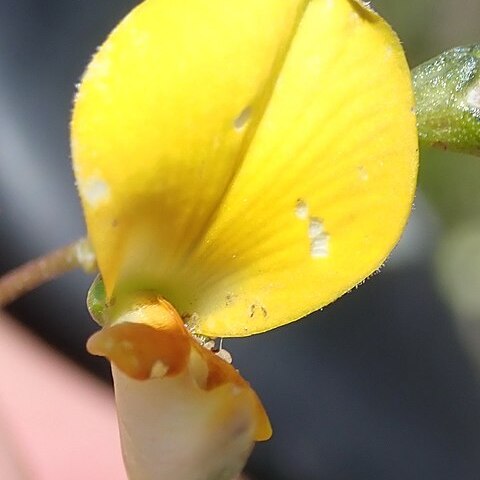Sprawling shrublet, 0.1-1.0 m. Branches slender but rigid, densely puberulous when young; floriferous branches often with 1 or 2 long, peduncle-like internodes. Leaflets linear, 2-12 mm long, terete, often broadest apically, glabrous, mucronulate. Inflorescences of 1(-5) flowers on terminal peduncles, sometimes separated by internodes. Calyx: tube glabrous, smooth; lobes small and triangular, glabrous, green, ± mucronate with short spinelet. Petals pale yellow, orange or rusty, often darkish on standard. Flowering time Aug.-Apr. Pod triangular lanceolate, smooth, sparsely short-sericeous.
Sprawling shrublet. Leaves 3-foliolate, leaflets terete, often broadest towards tip, straight or slightly curved, mucronulate (not very prickly), glabrous. Flowers 1-3(-5) on terminal peduncles, pale yellow, orange or rusty, wings glabrous, keel usually with almost square or rarely rostrate tip, glabrous, sometimes hairy at tip, calyx glabrous, lobes small and triangular, glabrous.

